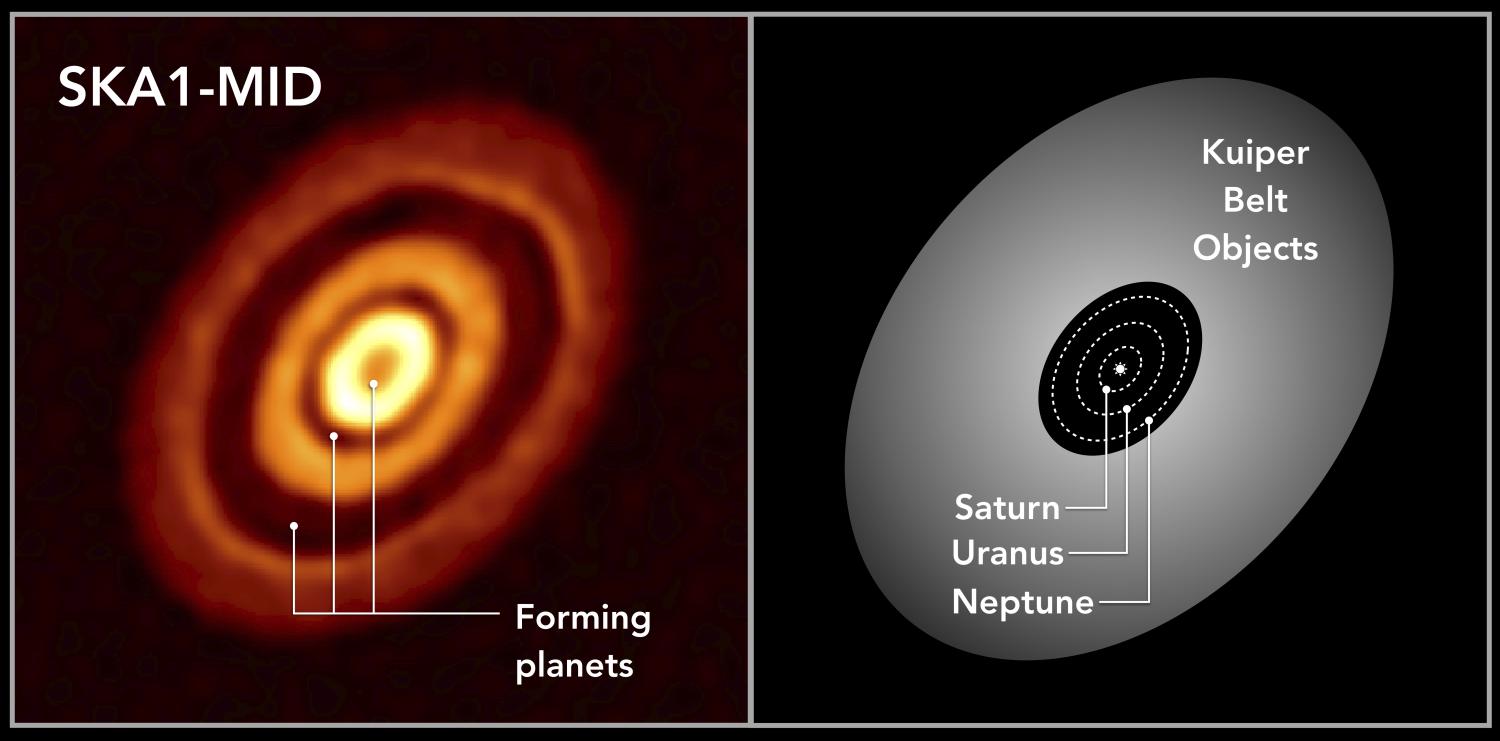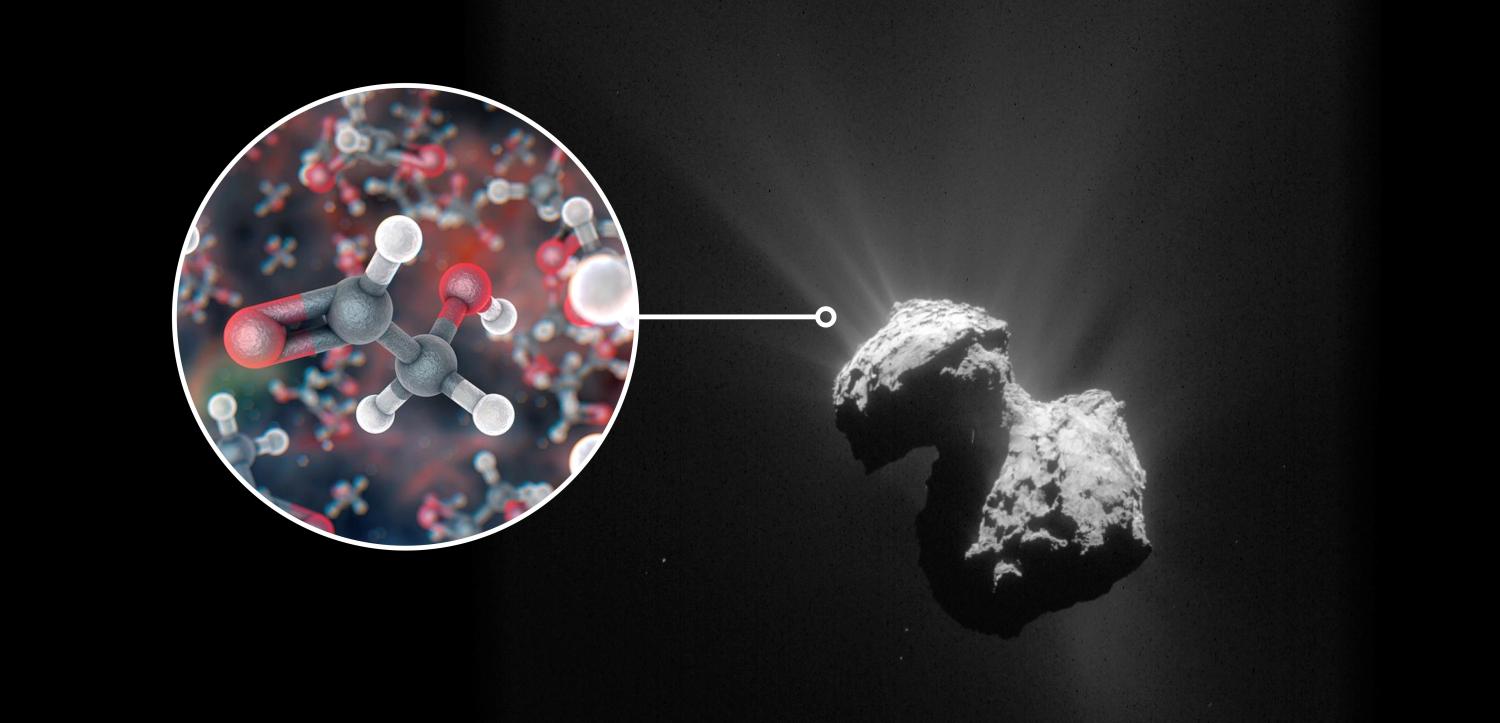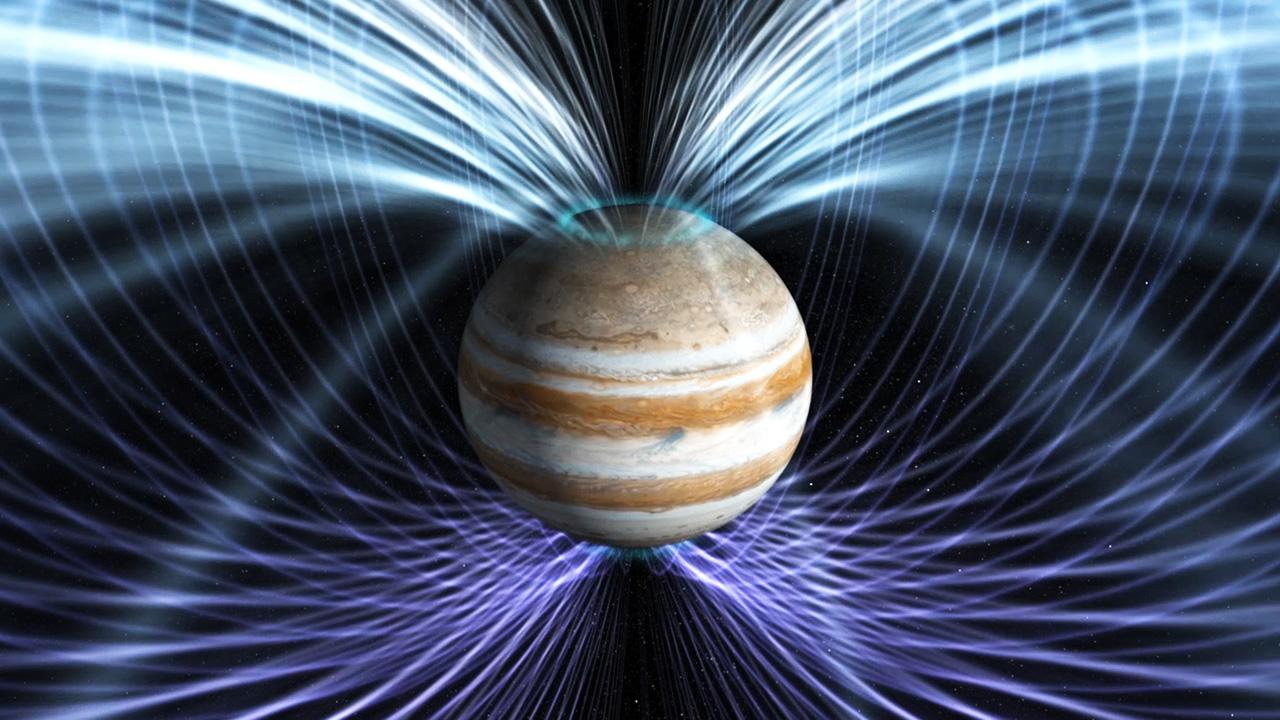Seeking the origins of life
At a glance
- The SKA telescopes will help explain how planets, including our Earth, form and how life emerge on them
- Called "Cradle of Life" studies, the field span many areas of astronomy, including understanding the physics and chemistry at play around young stars
- Another specialism is the search for extraterrestrial intelligence (SETI) that looks for radio signals from intelligent civilisations elsewhere in the Universe
At the mention of extraterrestrial life, people tend to think of little green beings and alien invasions. The science of looking for life in other worlds is gathering real momentum, though.
Astronomers have discovered complex organic molecules - the building blocks of life as we know it - in comets, nebula, and interstellar space. Finding them is one thing, but for life to eventually form requires a habitable home. That’s why understanding how planets form is a crucial goal for the SKA scientific community.
From pebbles to planets
Planets emerge from discs of dust and gas swirling around young stars. There’s still a lot that we don’t know about the process, but astronomers believe that microscopic dust particles begin sticking together, a bit like how a snowball becomes larger and larger - except in this case over the course of many hundreds of thousands of years.
Astronomers piece together the different parts of the planet formation process by observing discs around many young stars. Radio telescopes are particularly well suited to this task because they can peer into the densest regions of the discs and intercept electromagnetic radiation emitted directly by the dust grains.
However, current telescopes do not possess the resolution or sensitivity to observe a key step in building a planet: when micron-sized interstellar dust particles grow into centimetre-size (and larger) pebbles. The SKA-Mid telescope will be able to observe this in unprecedented detail.

Zooming in on the Solar System's edge
Another way in which the SKA telescopes can help explain how planetary systems form and evolve is by studying the building blocks of our own Solar System. These objects have survived at the edge of the Solar System in temperatures of -220ºC and even lower. They include trans-Neptunian objects (such as Pluto and Haumea), centaurs (objects with orbits between Jupiter and Neptune), and comets.
Composed of rocks, frozen water, and other exotic ices, these icy bodies have retained information about the formation of the Solar System 4.6 billion years ago. They also include complex organic molecules that may be prebiotic – precursors to those which may have led to life.
All molecules have unique fingerprints made up of a collection of signals at different wavelengths. The SKA telescopes are uniquely placed to search for these molecules as the emission from large, complex organics naturally arises in the radio band of the electromagnetic spectrum.
Locating the precursors of amino acids, ribonucleotides, sugars, and lipids will help us understand how life on Earth formed and better predict the likelihood of it arising on other planets.

Examining exoplanets
Planets with magnetic fields, such as the Earth, Jupiter, and Saturn, produce aurorae near their magnetic poles. Also known as northern or southern lights, these aurorae go hand in hand with bright radio emissions.
By observing these radio emissions, astronomers can learn more about the planet’s interior as well as its magnetosphere, which shields the planet from the high-velocity particles that the Sun constantly ejects. Being shielded from the solar wind prevents the atmosphere from being blown away and also ensures a low level of radiation at the planetary surface. Thanks to these protections, we have a habitable home on Earth.
By analogy, planets around other stars may also emit radio emission that will help astronomers understand their interiors and possibly whether some of them are habitable. There are hundreds of planetary systems within 50 light-years of the Sun that the SKA-Low telescope will be able to observe. Studying the signal detected from these systems will tell us about exoplanets' magnetospheres and how they interact with their host star.

Locating intelligent life
A specific area of astronomy focuses on the search for extra-terrestrial intelligence (SETI). These projects look for indicators of technology (called technosignatures) as a proxy for the intelligence that produced them, whether messages being broadcast deliberately or just the electromagnetic noise that technology creates which can leak out into space.
The SKA's sensitivity will allow it to expand the volume of the Galaxy that can be searched for such signals by a factor of 1,000, using a wider range of frequencies than attempted before. SETI also benefits from a technique known as piggybacking - where the data captured during other unrelated observations are analysed - meaning it doesn’t necessarily need dedicated telescope time. As such, researchers can cover more ground (or sky, in this case).
The detection of such extraterrestrial signals would forever change the perception of humanity in the Universe. The search is on, and the SKA telescopes will be at the forefront of one of humankind’s greatest quests.





